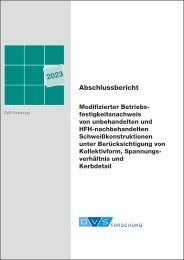STEEL + TECHNOLOGY 04/2019 EXTRACT
STEEL + TECHNOLOGY 04/2019 EXTRACT
STEEL + TECHNOLOGY 04/2019 EXTRACT
You also want an ePaper? Increase the reach of your titles
YUMPU automatically turns print PDFs into web optimized ePapers that Google loves.
EVENTS | 35<br />
Executive committee meeting, general assembly <strong>2019</strong> (Picture: worldsteel)<br />
Steel demand in the developed world<br />
stagnates with weakening manufacturing.<br />
After growing by 1.2% in 2018, steel<br />
demand in the developed economies is<br />
expected to show a small contraction of<br />
-0.1% in <strong>2019</strong>. The consumer sectors and<br />
construction maintained positive momentum,<br />
however manufacturing slumped due<br />
to a deteriorating environment for export<br />
and investment. In 2020, with the effect<br />
of some technical rebound, steel demand<br />
in the developed world is expected to<br />
grow by 0.6%.<br />
Developing economies (excluding China)<br />
present a mixed picture, but high growth<br />
is expected in Asia. Growth of steel<br />
demand in the emerging economies<br />
excluding China is expected to slow down<br />
to 0.4% in <strong>2019</strong> due to contractions in Turkey,<br />
MENA and Latin America. But the<br />
growth is expected to rebound to 4.1% in<br />
2020 due to infrastructure investments,<br />
especially in Asia.<br />
Construction<br />
The global construction sector’s growth is<br />
expected to slow to 1.5% in <strong>2019</strong> and<br />
1.2% in 2020 after growth of 2.8% in<br />
2018. The picture for construction activity<br />
in the developed economies in <strong>2019</strong>-2020<br />
is somewhat mixed. The US construction<br />
sector is expected to weaken in <strong>2019</strong> with<br />
no recovery in 2020. In Europe, the construction<br />
sectors in Germany, Spain, the<br />
Netherlands and Central European economies,<br />
while still maintaining growth, will<br />
slow down due to weakening economic<br />
fundamentals and constraints in construction<br />
capacity. Civil engineering is expected<br />
to be the construction driver owing to<br />
investment in energy, transport and communication<br />
networks.<br />
The Japanese construction sector is<br />
projected to report almost no growth as<br />
the decline in residential construction will<br />
be offset by growth in civil engineering.<br />
Korea’s construction sector is expected to<br />
continue contracting despite some support<br />
from public projects.<br />
Construction in emerging markets will<br />
be strong, largely influenced by infrastructure<br />
projects. In China, the real estate sector<br />
drove growth in construction activity in<br />
<strong>2019</strong>, but in 2020 this will slow down.<br />
Infrastructure investment is expected to<br />
be boosted by government stimulus. In<br />
ASEAN and India, active infrastructure<br />
investment is expected to drive construction.<br />
Turkey has seen contracting construction<br />
activity in line with the overall economy.<br />
After a severe decline in <strong>2019</strong>, Turkey<br />
will see only a moderate rebound in 2020.<br />
In Latin America generally, infrastructure<br />
investment is constrained by uncertainty<br />
and government budget issues.<br />
Brazil’s construction sector, which has<br />
been contracting since 2014, has shown<br />
positive growth in <strong>2019</strong> and this could<br />
continue with infrastructure a policy priority.<br />
Automotive<br />
Global automotive production decelerated<br />
in 2018 and is expected to contract in <strong>2019</strong><br />
with recession deepening and broadening<br />
across several major markets including<br />
Germany, Turkey, China and South Korea.<br />
The automotive market has been hit by<br />
more than global economic factors including,<br />
market saturation, reduction in purchasing<br />
and promotion incentives and<br />
most importantly customer hesitancy during<br />
the transition of the auto industry from<br />
combustion engine-powered via hybrid to<br />
fully electric vehicles.<br />
This decline has been particularly<br />
severe in Germany and China with passenger<br />
car production declining by -10.6% and<br />
-13.8%, respectively in the first eight<br />
months of <strong>2019</strong>. It is expected that the<br />
Chinese government may introduce some<br />
tax measures to boost sales of passenger<br />
vehicles, especially new energy vehicles.<br />
This could lead to a recovery in 2020.<br />
In the US, the auto market is expected<br />
to decelerate with no growth in <strong>2019</strong> and<br />
only a slight increase in 2020, but steel use<br />
is expected to benefit from the shift<br />
toward light truck models. Japanese and<br />
Korean car production is being affected by<br />
weak export markets.<br />
<strong>STEEL</strong> + <strong>TECHNOLOGY</strong> 1 (<strong>2019</strong>) No. 4


















